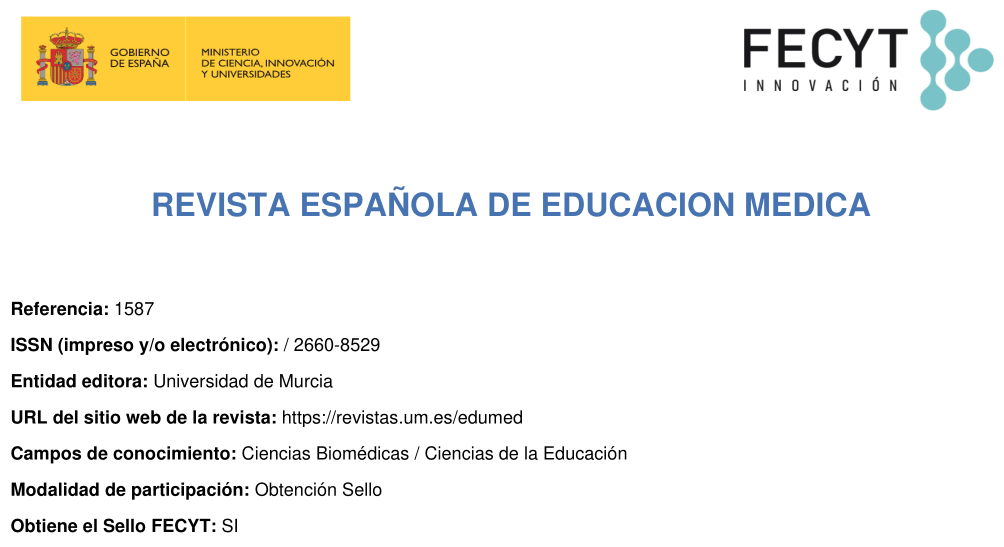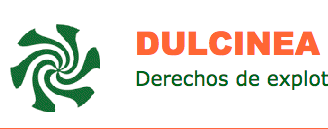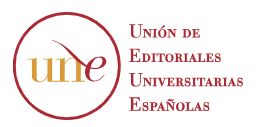Nursing techniques in the training process: the perspective of the Medical Technology student.
Abstract
Basic nursing techniques are not only applied by nurses but also by other professions. Objective: to explore the opinion of Medical Technology students regarding nursing techniques for their professional and disciplinary development taught in the subject "Nursing and Infections Associated with Health Care”. Methods: qualitative, descriptive and interpretive research with a phenomenological approach, the sample consisted of 12 second-year students, inclusion criteria: students curricularly up to date in the second semester of 2024, enrolled for the first time in the subject, with time availability. Data collection was through 2 focus groups, the speeches were treated using the Bardin method, which was carried out manually, as a criterion of Guba rigor, transferability is highlighted; ethical rigor criterion: Declaration of Helsinki of the World Medical Association, was approved by the scientific ethics committee of the career. Results: Three categories emerged: "Academic Representation", "Practical Dimension", and "Proposals for improvement. Conclusions: The figure of the teacher should transmit confidence and provide effective feedback when evaluating the techniques, they facilitate the understanding and approach of the subjects and contents in higher courses to students in training, in the disciplinary field it reinforces the professional role and allows the use of clinical reasoning for clinical decision making, the application of the techniques in the personal and family environment is valued, especially in situations requiring first aid. Regarding the implementation of these activities in practice laboratories, the interviewees made recommendations focused on increasing the number of assistants per laboratory, improving the physical space, evaluating the duration of the laboratory since they consider it a stressful factor to have a lot of time for it, improving the quality and quantity of technical resources and supplies.
Downloads
Metrics
-
Abstract342
-
pdf (Español (España))274
-
pdf274
References
Alano A. Basic Clinical Nursing Skills. Lecture Notes for Nursing Students. 2002. https://www.cartercenter.org/resources/pdfs/health/ephti/library/lecture_notes/nursing_students/ln_clin_nursing_final.pdf
Improving Safety Through Education and Training. Report by the Commission on Education and Training for Patient Safety. 2016. https://www.hee.nhs.uk/sites/default/files/documents/Improving%20safety%20through%20education%20and%20training.pdf
Haraldseid C, Friberg F, Aase K. Nursing students' perceptions of factors influencing their learning environment in a clinical skills laboratory: A qualitative study. Nurse Educ Today. 2015, 35 (9), e1-6. https://doi.org/10.1016/j.nedt.2015.03.015
Gregersen AG, Hansen MT, Brynhildsen SEA, Grøndahl VA, Leonardsen AC. Students' Perspectives on Learning Practical Nursing Skills: A Focus Group Study in Norway. Nurs Res Pract.; 2021, 8870394. https://doi.org/10.1155/2021/8870394
Ravik M., Havnes A., Bjørk I. Conditions affecting the performance of peripheral vein cannulation during hospital placement: a case study. Nurs Resear and Pract. 2017, 9748492. https://doi.org/10.1155/2017/9748492
Hilleren IHS, Christiansen B, Bjørk IT. Learning practical nursing skills in simulation centers - A narrative review. Int J Nurs Stud Adv. 2022, 4. 100090. https://doi.org/10.1016/j.ijnsa.2022.100090
Ahmed-Basher FM, Ibrahim-Zeal B, Ibrahim-Zeali N, Mohammed Alabsi MA, Qatmul, Khulud HAM, Ahmed Asiri Z, et al. Practical Nursing Skills: Administering Medications, Wound Care, and Monitoring Vital Signs. J of Intern Cri and Ris Commun Rese, 2024, 7 (S8), 575–579. https://jicrcr.com/index.php/jicrcr/article/view/780
Vázquez-Gómez LA, Rodríguez-Calvo M, Arriola-Mesa Y, Rodríguez-Casas EA. Evaluación de habilidades clínicas en estudiantes de tercer año de Medicina. EDUME. 2015, 7 (3), 165-176. http://scielo.sld.cu/scielo.php?script=sci_arttext&pid=S2077-28742015000300012&lng=es
Lemus, M, Guevara, M. Prácticas de laboratorio como estrategia didáctica para la construcción y comprensión de los temas de biología en estudiantes del recinto Emilio Prud´homme. Cub de Educ Supe. 2021, 40 (2). http://scielo.sld.cu/scielo.php?script=sci_arttext&pid=S0257-43142021000200011&lng=es&nrm=iso
Sjöblom, K., Mälkki, K., Sandström, N., y Lonka, K. Does Physical Environment Contribute to Basic Psychological Needs? A Self-Determination Theory Perspective on Learning in the Chemistry Laboratory. J Front Learn Resea, 2016, 4 (1), 17-39. https://www.researchgate.net/publication/357928372_Does_Physical_Environment_Contribute_to_Basic_Psychological_Needs_A_Self-Determination_Theory_Perspective_on_Learning_in_the_Chemistry_Laboratory
Juárez -Vera D. Capacidad diagnóstica y logro de competencias clínicas en estudiantes de ciencias de la salud de universidades de Andahuaylas, 2024. Escuela de Posgrado. Programa Académico de Maestría en Docencia Universitaria. 2024. https://repositorio.ucv.edu.pe/bitstream/handle/20.500.12692/151233/Juarez_VDM-SD.pdf?sequence=1&isAllowed=y
Clavijo-Cáceres D. Competencias del docente universitario en el siglo XXI. Espac, 2018, 39 (20), 22. https://www.revistaespacios.com/a18v39n20/18392022.html
Alharbi, A., Nurfianti, A., Mullen, R.F. et al. The effectiveness of simulation-based learning (SBL) on students’ knowledge and skills in nursing programs: a systematic review. BMC Med Educ, 2024, 24, 1099. https://doi.org/10.1186/s12909-024-06080-z
Márquez-Furet A, Suárez-Cabrera A, Arteaga-Lizán MM, Varcárcel-Izquierdo N, Paneque-Ginarte AN, Diaz-Perez KB. Procederes de enfermería para estudiantes de la carrera de Medicina. Cub Tecno Salu. 2020, 11 (3). https://revtecnologia.sld.cu/index.php/tec/article/view/1939
Chambers BR, Mack J, Sabus C, Becker D, Shaw P, Diederich E. Interprofessional Procedure Training for Medicine and Nursing Students. J Med EdPORTAL. 2020, 6, 16:10884. https://doi.org/10.15766/mep_2374-8265.10884
Australian Guidelines for the Prevention and Control of Infection in Healthcare. National Health and Medical Research Council and Australian Commission on Safety and Quality in Health Care. 2019. https://www.safetyandquality.gov.au/sites/default/files/2024-08/australian-guidelines-for-the-prevention-and-control-of-infection-in-healthcare.pdf
Plan de Estudio, Carrera Tecnología Médica, Universidad Católica de Temuco UCT, 2023.
Hernández-Sampieri R, Mendoza C. Metodología de la investigación. Las rutas cuantitativa, cualitativa y mixta. 2° Ed. Ciudad de México, México: Editorial Mc Graw Hill; 2018.
Altamira-Camacho R, de la Cruz-Alvarado MG. Trayectoria fenomenológica: una aproximación al camino hermenéutico de la experiencia de salud. Rev Temperamentvm. 2022; 18: e13928. https://dx.doi.org/10.58807/tmptvm20224971.
Czernek-Marszałek K, McCabe S. Sampling in qualitative interview research: criteria, considerations and guidelines for success. J Ann of Tour Rese, 2024, 103711. Advance online publication. https://doi.org/10.1016/j.annals.2023.103711
Stake RE. Pesquisa Qualitativa: estudando como as coisas funcionam. Porto Alegre: Penso; 2011. https://www.periodicos.rc.biblioteca.unesp.br/index.php/educacao/article/view/14553
Polit D, Hungler B. Investigación científica en Ciencias de la Salud. 6a ed. México: McGraw-Hill Interamericana; 2000.
Martínez-Corona L, Hernández-Fonseca M. Uso y abuso de los criterios de inclusión y exclusión en el proyecto de investigación. MediSur, 2023, 21 (5), 1144-1146. https://medisur.sld.cu/index.php/medisur/article/view/5744
Basnet H. Focus Group Discussion in Qualitative Research. Researcher: A Rese Jour of Cult and Socie. 2018, 3 (3), 81. 10.3126/researcher.v3i3.21553
Ortega-Bastias J. ¿Cómo saturamos los datos? una Propuesta Analítica “desde” y “para” la Investigación Cualitativa. Ensay. 2020, 5 (6), 293-299. https://www.researchgate.net/publication/342720176_como_saturamos_los_datos_una_propuesta_analitica_desde_y_para_la_investigacion_cualitativa
Análisis de contenido de Bardin L [Análise de Conteúdo]. São Paulo Edições 70; 2011,
Johnson JL, Adkins D, Chauvin S. A Review of the Quality Indicators of Rigor in Qualitative Research. Am J Pharm Educ. 2020, 84 (1), 7120. https://doi.org/10.5688/ajpe7120
Organización Panamericana de Salud. OPS. Declaración de Helsinki de la AMM – Principios éticos para las investigaciones médicas en seres humanos (oct.,2024). 2024. https://www.paho.org/es/documentos/declaracion-helsinki-amm-principios-eticos-para-investigaciones-medicas-seres-humanos
Janštová, V. (What is Actually Taught in High School Biology Practical Courses. Proceedings (Conference). 8th International Conference of Education, Resea and Innov (ICERI). 2015. https://www.researchgate.net/publication/305710981_What_is_actually_taught_in_high_school_biology_practical_courses
Cabrera-Murcia P. ¿Cómo diseñar ayudantías que favorezcan el aprendizaje activo de los estudiantes tutoreados?: La percepción del ayudante universitario. Estud pedagó (Valdivia). 2017, 43 (3), 47-62. https://dx.doi.org/10.4067/S0718-07052017000300003
Córdova-Sotomayor DA, Santa María-Carlos FB. Factores asociados al estrés en estudiantes de odontología de una universidad peruana. Estoma Hered 2018, 28 (4), 252-258. http://dx.doi.org/https://doi.org/10.20453/reh.v28i4.3429.
Copyright (c) 2025 Servicio de Publicaciones de la Universidad de Murcia

This work is licensed under a Creative Commons Attribution-NonCommercial-NoDerivatives 4.0 International License.
The works published in this magazine are subject to the following terms:
1. The Publications Service of the University of Murcia (the publisher) preserves the economic rights (copyright) of the published works and favors and allows them to be reused under the use license indicated in point 2.
2. The works are published under a Creative Commons Attribution-NonCommercial-NoDerivative 4.0 license.
3. Self-archiving conditions. Authors are allowed and encouraged to disseminate electronically the pre-print versions (version before being evaluated and sent to the journal) and / or post-print (version evaluated and accepted for publication) of their works before publication , since it favors its circulation and earlier diffusion and with it a possible increase in its citation and reach among the academic community.



















